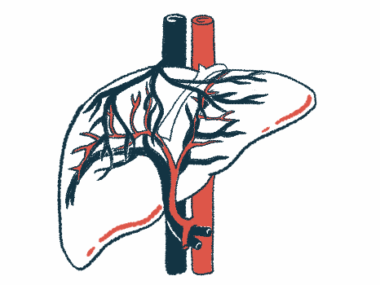New mutations tied to rapidly progressing intrahepatic cholestasis
Researchers: Liver transplant may be only treatment toward a 'cure'
Written by |

Researchers in China have identified five new mutations in the NR1H4 gene in three boys with progressive familial intrahepatic cholestasis type 5 (PFIC5) and rapidly progressing disease.
A review of the three cases of PFIC5 with others in the literature led researchers to hypothesize that a liver transplant may be the only life-saving treatment option for the condition. Indeed, all but one child who had a transplant survived with no serious post-surgical complications, while all the children who didn’t have a transplant died.
The “long-term outcome of [liver transplantation] still needs to be validated in more patients,” the researchers wrote in “NR1H4 disease: rapidly progressing neonatal intrahepatic cholestasis and early death,” which was published in the Orphanet Journal of Rare Diseases.
Progressive familial intrahepatic cholestasis is a group of rare genetic liver diseases marked by problems in producing and/or secreting the digestive fluid bile by liver cells. This results in intrahepatic cholestasis, that is, slowed or stalled bile flow in the ducts that transport bile inside the liver, in early childhood.
Cholestasis leads to bile building up inside the liver, causing damage, and bile acid leakage into the bloodstream, resulting in early symptoms such as itchy and yellowing skin, and a yellowing of the whites of the eyes, or jaundice.
PFIC5 is typically caused by mutations in both copies of the NR1H4 gene, which provides instructions for producing farnesoid X receptor (FXR), a protein that regulates bile acid production, movement, and absorption. FXR deficiency leads to excess levels of bile acids.
From the few known cases of PFIC5, the disease appears to have an early onset and progresses rapidly to liver failure. Other features include low levels of gamma-glutamyl transferase (GGT), a marker of liver or bile duct disease; blood clotting problems that are resistant to treatment with vitamin K; and high levels of alpha-fetoprotein (AFP), a biomarker of liver inflammation and scarring.
Comparing three cases with other cholestasis cases
Here, researchers in China described the cases of three unrelated baby boys who were found to carry five new NR1H4 mutations that were the likely cause of their PFIC5.
One of the boys carried the same mutation — c.1235T>C — in both NR1H4 copies. The other two carried different, unique mutations in each gene copy: c.688 C>T and c.505T>A in one, and c.1066+1G>A and c.527G>A in the other.
None of the mutations had been previously reported. Three (c.505T>A, c.1235T>C, and c.527G>A) were missense mutations, meaning they resulted in one amino acid (protein’s building blocks) being swapped for another. The c688C>T mutation was a nonsense mutation, which results in a shorter, likely nonworking, protein being produced, and the c1066+1G>A mutation was a splice site mutation that typically affects the protein-coding sequence.
All mutations were predicted to cause disease, with the nonsense mutation likely resulting in no protein production, and the splice site mutation likely leading to a shorter protein.
The babies were born after uneventful pregnancies. One family had a child who died of unexplained liver problems at 7 months. The other two families had no history of early-life liver disease. They all showed jaundice soon after birth (2-5 days of age) and progressed rapidly to cirrhosis (permanent liver scarring) or liver failure. Like previously reported cases, all had low-GGT intrahepatic cholestasis, vitamin K-resistant blood clotting problems, and high AFP levels. They also all had recurrent severe pneumonia (a lung infection), an enlarged spleen, and signs of possible kidney problems. Two boys had an enlarged liver and scrotum fluid buildup, and two failed to thrive.
Two boys died from infection when they were 3 months. The other received a liver transplant at 4 months and showed normal liver function a year later.
The researchers analyzed the three cases with 10 unrelated PFIC5 patients (five boys, four girls, and one of unknown sex) reported in the literature and found the median age at disease onset was 7 days.
Most of the 13 patients (92%) developed jaundice in the first month of life. Other symptoms included cholestasis (100%); persistently high AFP levels (100%); blood clotting problems; low levels of blood sugar (69%); failure to thrive (62%); an enlarged liver (54%), high levels of ammonia, a potent neurotoxin (54%); and an enlarged liver (46%).
Six (46%) received a liver transplant at a median age of 6.2 months (range, 2-20 months). One died from infection a year later, whereas the other five were alive at a median age of 6 years (range, 1.3-10 years) at the time the researchers’ report was being written. The seven patients who didn’t receive a liver transplant died at a median age of 5 months (range, 1.2-8 months).
“NR1H4-related PFIC is characterized by severe neonatal cholestasis, rapid progression to liver failure, and early death,” wrote the researchers, who called a liver transplant possibly the only treatment “that can lead to cure.”







